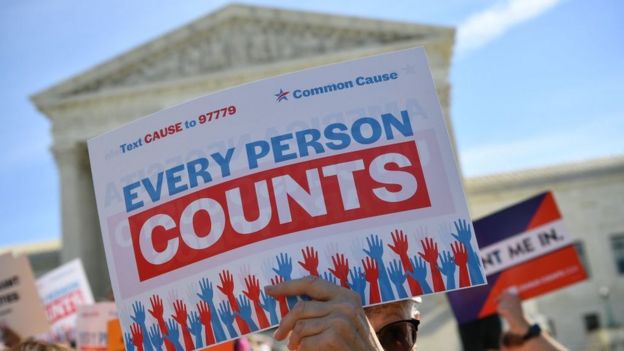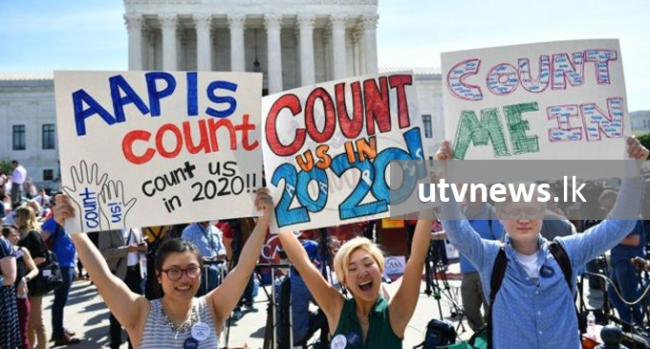(UTV|COLOMBO) – The Trump administration has dropped a controversial plan to add a citizenship question to the 2020 census, marking a major victory for civil rights groups.
It comes just days after the Supreme Court blocked efforts to include the question, ruling that the government’s justification seemed “contrived”.
The White House argued it would bolster protections for minority voters.
But opponents said it would deter immigrant households from taking part in the once-a-decade population count.
Democrats and civil rights groups feared this reluctance would lead to millions of people – mostly Latinos and African Americans – going uncounted for.
The Supreme Court had temporarily blocked the citizenship question, saying the government had not provided adequate justification for it.
President Trump initially touted the idea of delaying the census to allow time to provide new legal arguments.
But on Tuesday his administration backed down.
“I respect the Supreme Court but strongly disagree with its ruling regarding my decision to reinstate a citizenship question on the 2020 census,” Commerce Secretary Wilbur Ross said in a statement.
“The Census Bureau has started the process of printing the decennial questionnaires without the question,” he added.
What is the citizenship question?
“Is this person a citizen of the United States?”
This question has not appeared on a US census for all Americans since 1950, though it has been asked to some subsets of the population between 1970 and 2000.
The population count helps the government draw up districts for state and local elections, and determine how much federal funding each state receives – a matter of hundreds of billions of dollars.

In a 2018 report, Census Bureau researchers found that the inclusion of a citizenship question will likely suppress response rates in households with immigrants and minority groups, leading to a “lower-quality population count”.
But Mr Ross – the billionaire financier who oversees the Census Bureau – insisted that detailed citizenship data is of “greater importance than any adverse effect” posed by an undercount.
Why was it so controversial?
The heated legal battle over whether to include a citizenship question in the 2020 census has hinged on the motives underlying it.
The White House argued that the decision was made for practical reasons. “When you have a census and you’re not allowed to talk about whether or not somebody’s a citizen or not, that doesn’t sound so good to me,” Mr Trump said to reporters last month.
But critics argue efforts to include the question were politically motivated and say it would have suppressed responses from immigrants and racial minorities.
This would almost certainly benefit the Republican Party when it comes to the drawing-up of districts for elections and calculating how much funding each state receives.

The states with the highest immigration populations, such as California and New Mexico, would have been at the greatest risk of an undercount. Many of these states tend to vote Democrat.
Depressed response rates in these states would allow for electorate boundaries to be redrawn, pulling political power – and funding – away from Democratic-leaning, minority households.
Last week, the Supreme Court wrote in a 5-4 ruling that the Trump administration had not provided adequate justification for the inclusion of the question.
Three federal judges had earlier issued rulings to block the question, one calling it a threat “to the very foundation” of US democracy.
(Courtesy – Foreign News)
[alert color=”faebcc” icon=”fa-commenting”]Keeping up to date with breaking news while you are on the move is now simple with UTV Alerts [textmarker color=”8a6d3b”]Type REG UTV and send to 77000[/textmarker] on your Dialog, Airtel, or Hutch mobile connection[/alert]
